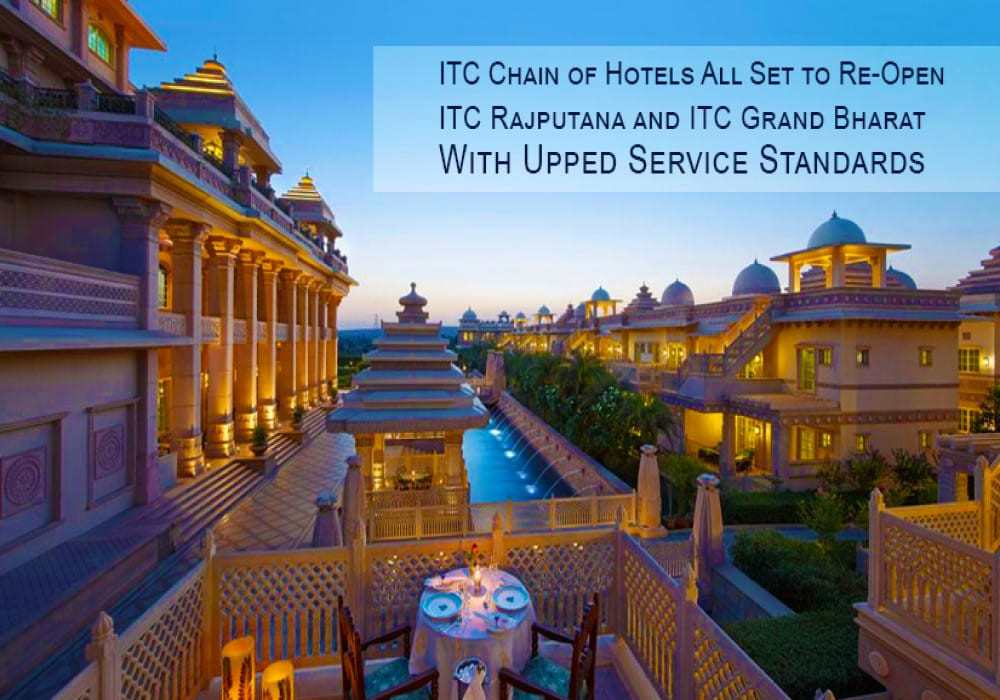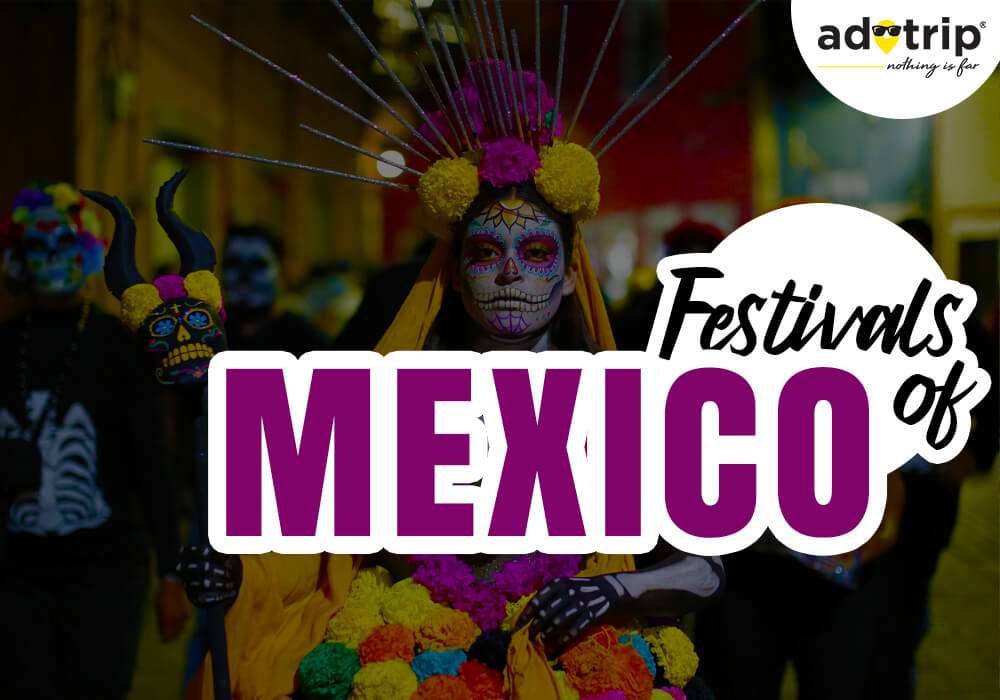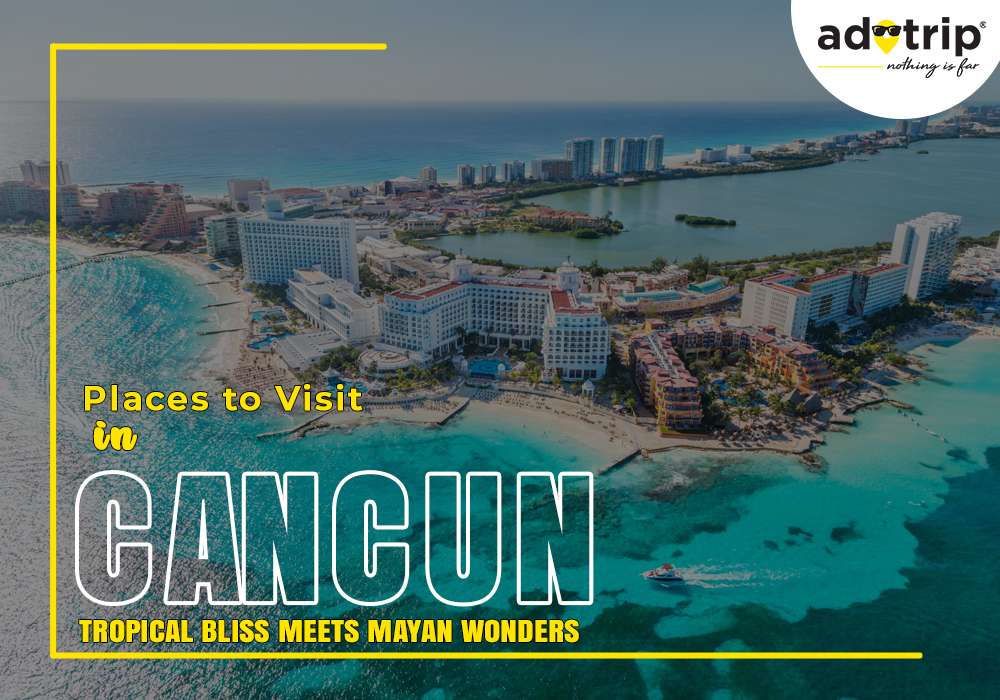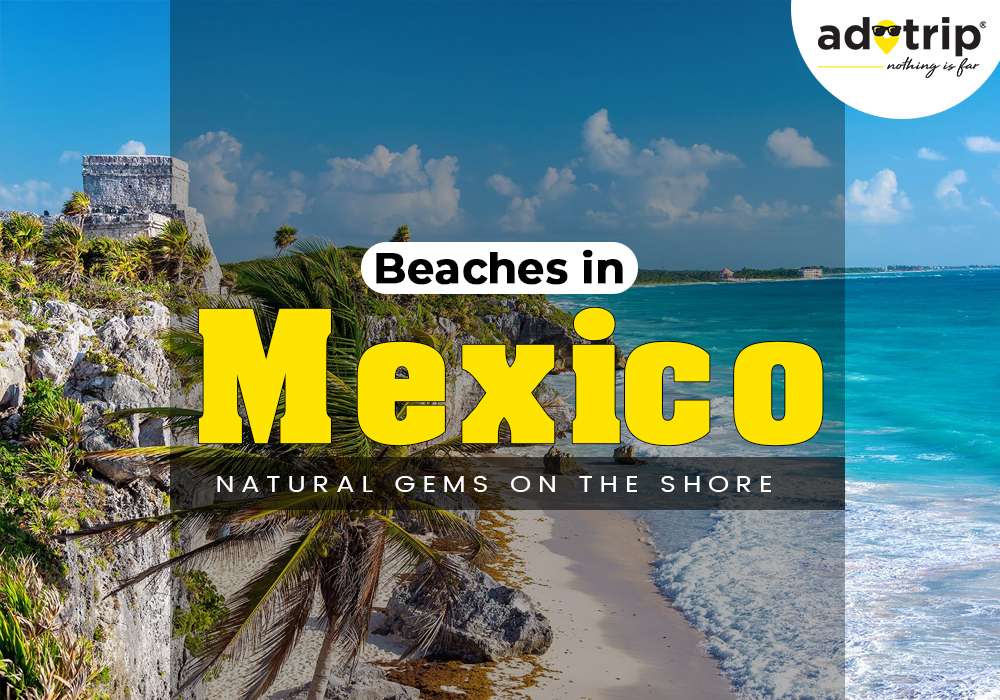
Last Updated At: 13-May-2024
Traditions and Culture of Mexico
Nestled between the Pacific Ocean and the Gulf of Mexico, Mexico stands as a vibrant and enchanting cultural crossroads, where ancient civilisations' echoes blend harmoniously with contemporary life's rhythms. The culture of Mexico is a living testament to the nation's rich history, diverse heritage, and deep-rooted traditions. From the majestic ruins of ancient empires to the bustling markets teeming with handcrafted treasures, every facet of Mexico's cultural landscape is an intricate thread woven into a tapestry of radiant beauty and profound significance.
Yet, Mexico's culture is far from frozen in time. It pulses vitality and dynamism, constantly evolving while preserving its core values. From the lively Mexican traditional music that fills plazas to the vibrant hues of conventional clothing in Mexico that adorn markets, the spirit of Mexico's culture infuses every aspect of daily life. It's in the aromatic wafts of street food stalls serving up tacos and tamales, the intricate patterns of papel picado swaying in the breeze, and the exuberant celebrations that bring communities together to honour their shared history.
Mexican Culture And Traditions
As you delve deeper into the culture of Mexico, you'll find that its diversity is not only rooted in its ancient past but also influenced by its geography. The distinct regions of Mexico each boast their traditions, cuisine, and arts, contributing to a rich mosaic that makes Mexico a tapestry of cultures within a single nation.
- Resonating Rhythms | Exploring Mexican Traditional Music
- Flavours of Mexico | A Culinary Odyssey Through Mexican Cuisine
- Fiestas and Traditions | Cultural Festivals in Vibrant Mexico
- Handcrafted Treasures | Unveiling Mexican Traditional Crafts
- Dancing through Culture | A Journey into Mexican Dance Forms
- Guardians of the Past | Unearthing the Cultural Heritage of Mexico
- Threads of Tradition | Mexican Traditional Clothing and Attire
- Architectural Marvels | Unmasking the Soul of Mexico's Architecture
- Literary Treasures | Gems of Mexico's Rich Literary Landscape
- Sports and Traditions | A Glimpse into Traditional Mexican Sports
1.Resonating Rhythms | Exploring Mexican Traditional Music
The vibrant melodies and rhythmic beats of traditional Mexican music echo through the annals of the nation's history. From the soulful strains of mariachi to the pulsating rhythms of banda and the hypnotic sounds of marimba, Mexican music is a reflection of the cultural tapestry that has evolved over centuries. Mariachi bands, clad in intricate attire, serenade with heart-wrenching ballads, while regional folk music captures the essence of life in different corners of the country. Each note resonates with stories of love, struggle, triumph, and celebration as a vessel that transports listeners to the heart of Mexico's diverse landscapes and narratives.
2. Flavours of Mexico | A Culinary Odyssey Through Mexican Cuisine
Mexican cuisine is a compelling journey that fuses history, tradition, and innovation onto the plate. From the fiery kick of chillies to the delicate flavours of indigenous herbs, each dish is a testament to the fusion of pre-Hispanic ingredients and Spanish influences. Tacos, enchiladas, mole, and guacamole are just a few of the iconic words that tantalise the palate. Using corn, beans, and spices like cumin and oregano creates a symphony of flavours that celebrate the connection between the land and the table, offering a true taste of Mexico's cultural heritage.
3. Fiestas and Traditions | Cultural Festivals in Vibrant Mexico
Mexico's calendar is punctuated by various cultural festivals that pulsate with energy and enthusiasm. The Day of the Dead, a poignant celebration of life and death, sees families gathering to honour their ancestors with ofrendas and marigolds. The vibrant Carnaval, rooted in Spanish and indigenous traditions, erupts into a kaleidoscope of costumes, music, and dance. The Guelaguetza, a festival of indigenous communities in Oaxaca, showcases folk dances and rituals that embody the unity and diversity of Mexico's cultural tapestry. These festivals are a window into the heart of Mexico's festival traditions, where old and new intertwine in a celebration of life and heritage.
4. Handcrafted Treasures | Unveiling Mexican Traditional Crafts
Mexican traditional crafts are a testament to the nation's rich artistic heritage, where skilled artisans pass down techniques from generation to generation. Intricate Talavera pottery from Puebla, vibrant textiles from Oaxaca, and intricate silver jewellery from Taxco are just a few examples of the handcrafted treasures encapsulating Mexico's diverse regions. These crafts reflect indigenous traditions and Spanish colonial influences, each telling a story of cultural fusion and creativity. Through these artisanal works, Mexico's cultural heritage is preserved and celebrated and shared with the world.
5. Dancing through Culture | A Journey into Mexican Dance Forms
Mexican dance forms are a whirlwind of movement and emotion, expressing stories of love, history, and community. The traditional dance of the Aztecs, the danzón of the Caribbean coast, and the exuberant jarabe tapatío, also known as the Mexican hat dance, all paint a vibrant picture of Mexico's cultural diversity. These dances often showcase intricate costumes, where every element, from the colours to the embroidery, holds meaning and significance. Through dance, Mexico's cultural legacy is animated, allowing traditions to come alive with each step and every graceful gesture.
6. Guardians of the Past | Unearthing the Cultural Heritage of Mexico
The cultural heritage of Mexico is a tapestry woven from the threads of ancient civilisations, indigenous wisdom, and colonial influences. The towering pyramids of Teotihuacan, the mystical city of Chichen Itza, and the grandeur of Palenque speak of the Maya and Aztec civilisations that once flourished. The colonial architecture of cities like Mexico City, Puebla, and Guanajuato reflects the Spanish conquest and the melding of European styles with indigenous aesthetics. These historical sites and landmarks are guardians of Mexico's past, offering glimpses into the layers of cultural evolution that have shaped the nation.
7. Threads of Tradition | Mexican Traditional Clothing and Attire
Mexican traditional clothing is a visual tapestry that weaves history, identity, and craftsmanship together. From the elaborate huipil worn by indigenous women to the sombrero and serape symbolic of Mexico's rural heritage, attire is a vibrant expression of cultural identity. Each region boasts distinct clothing, often featuring intricate embroidery, vibrant colours, and symbols narrating tales of ancestry and rituals. Mexican traditional clothing is a canvas where heritage is painted, reflecting the intersection of history and everyday life.
8. Architectural Marvels | Unmasking the Soul of Mexico's Architecture
Mexico's architecture is a testament to its complex history and the fusion of indigenous, European, and modern influences. The colonial-era churches and cathedrals, adorned with ornate facades and grand interiors, stand as symbols of Spanish colonisation and religious conversion. In contrast, modern architectural marvels like the Museo Soumaya and the Palacio de Bellas Artes in Mexico City embody contemporary design and artistic expression. The Mesoamerican pyramids and temples, like those at Tulum and Coba, connect visitors to the spirituality and ingenuity of ancient civilisations. Through architecture, Mexico's heritage is etched into its landscapes, offering a tangible link between the past and the present.
9. Literary Treasures | Gems of Mexico's Rich Literary Landscape
Mexico's literary landscape is a treasure trove of words that explore the human experience and the nation's complex history. The works of Octavio Paz, Carlos Fuentes, and Laura Esquivel capture the essence of Mexican identity, with themes ranging from magical realism to social commentary. The folktales and legends passed down through generations evoke the spirit of ancient times and indigenous belief systems. Mexico's literature transcends borders, resonating with readers worldwide while preserving its unique narrative.
10. Sports and Traditions | A Glimpse into Traditional Mexican Sports
Sports hold a special place in Mexico's cultural fabric, uniting communities and offering a glimpse into traditions that have endured for generations. Lucha libre, Mexican professional wrestling, combines athleticism with colourful masks and vivid characters, captivating audiences with theatricality. The Mesoamerican ball game, known as ullamaliztli, reflects ancient traditions and spiritual significance. Traditional horse riding events like charrería showcase the equestrian skills deeply rooted in rural life. Through these sports, Mexico's culture is animated with the spirit of competition, camaraderie, and preserving time-honoured practices.
Read More: Best Tourist Places To Visit In Mexico
In essence, the culture of Mexico is an enchanting symphony of diverse traditions, artistic expressions, and historical layers that come together to create a vibrant and dynamic tapestry. From the mesmerising rhythms of traditional music to the tantalising flavours of its cuisine, from the elaborate costumes of dance forms to the architectural marvels that define its landscapes, Mexico's culture is a celebration of unity within diversity. It is a cultural mosaic that reflects the enduring spirit of a nation that cherishes its past while embracing the rhythms of the present. Through its rich heritage, Mexico invites the world to explore, appreciate, and engage with its unique narrative that continues to captivate and inspire. So, start your journey with Adotrip, and enjoy every aspect of Mexican culture.
With us, nothing is far!
Book Mexico Tour Packages
Frequently Asked Questions About Culture Of Mexico
Q1. How influential is Mexico's indigenous heritage?
A1. Mexico's indigenous heritage is highly influential and manifests in the following:
- Language diversity
- Cultural traditions and rituals
- Art and craft techniques
- Culinary practices and ingredients
- Spiritual beliefs and ceremonies
Q2. What role does Catholicism play in Mexican culture?
A2. Catholicism plays a significant role in Mexican culture by:
- Shaping religious practices and traditions
- Influencing festivals and celebrations
- Contributing to art, architecture, and iconography
- Fostering a sense of community and identity
- Reflecting a blend of indigenous and Spanish influences
Q3. How important are family and community values?
A3. Family and community values are crucial in Mexican culture, evidenced by the following:
- Strong emphasis on close-knit family bonds
- Participation in communal events and celebrations
- Support networks for individuals and families
- Influence on decision-making and life choices
- Transmitting cultural heritage and traditions to younger generations
Q4. How is food central to cultural identity?
A4. Food is central to Mexican cultural identity due to:
- Fusion of indigenous and Spanish ingredients and techniques
- Reflecting historical and regional diversity
- Symbolising shared experiences and celebrations
- Serving as a source of pride and tradition
- Being a means of preserving cultural heritage
Q5. What folk art forms like alebrijes are iconic?
A5. Iconic Mexican folk art forms like alebrijes include:
- Intricately carved and painted wooden sculptures
- Imaginative and vibrant mythical creatures
- Originating from Oaxaca, Mexico
- Showcasing creativity, craftsmanship, and cultural symbolism
- Contributing to Mexico's rich artistic heritage
Q6. How popular are Mariachi music and dance?
A6. Mariachi music and dance are highly popular in Mexico, evident from the following:
- Being recognised as a national symbol
- Frequent performances at celebrations and events
- Representing Mexican cultural identity globally
- Evoking strong emotions and cultural pride
- Contributing to a lively and vibrant cultural scene
Q7. What are quinceañeras and their significance?
A7. Quinceañeras are significant coming-of-age celebrations in Mexican culture, characterised by:
- Celebrating a girl's 15th birthday
- Marking the transition from childhood to womanhood
- Combining religious and cultural elements
- Including ceremonies, dances, and feasts
- Strengthening family bonds and cultural heritage
Q8. How are festivals like the Day of the Dead celebrated?
A8. Festivals like the Day of the Dead in Mexico are celebrated by:
- Creating altars (ofrendas) to honour deceased loved ones
- Decorating graves with marigold flowers and candles
- Preparing traditional foods like sugar skulls and pan de muerto
- Participating in parades, processions, and dances
- Blending indigenous beliefs with Catholic customs
Q9. What architectural styles reflect Mexican identity?
A9. Architectural styles reflecting Mexican identity include:
- Colonial architecture with Spanish influences
- Mesoamerican pyramids and structures
- Vibrant use of colours and ornate decorations
- A blend of indigenous and European aesthetics
- Evolving modern architectural expressions
Q10. How strong is pride in Mexico's pre-Hispanic past?
A10. Pride in Mexico's pre-Hispanic past is strong, as seen through:
- Preservation of ancient traditions and rituals
- Celebration of indigenous languages and cultures
- Influence on art, music, and dance forms
- Emphasis on historical sites and archaeology
- Contributing to national identity and heritage
--- Published By Adotrip
Latest Blogs

Long Weekends In India 2025 - List of Holidays

Kazakhstan Travel Guide 2025: Affordable Luxury, Visa Free E...

Think Ayodhya is Just Temples? Discover Its Hidden Artistic...

Why Azerbaijan is the Best Budget Friendly Alternative to Sw...












.jpg)
 Dubai
Dubai Malaysia
Malaysia USA
USA





